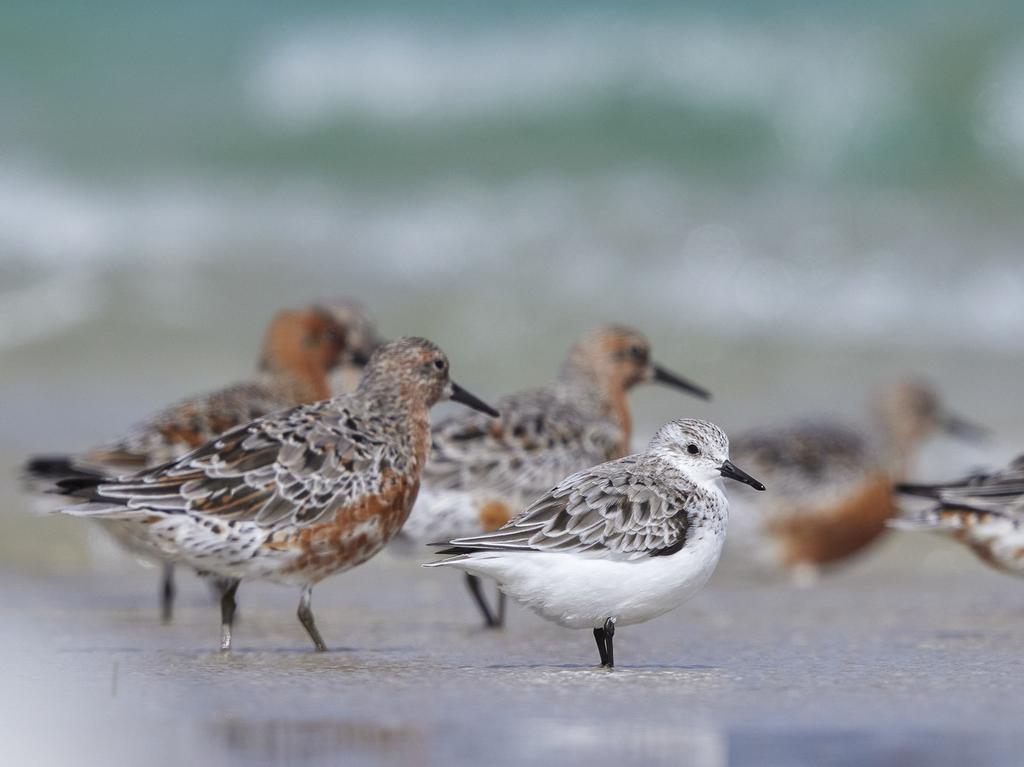Tanya Plibersek will consider new evidence of endangered parrots on Tasmanian wind farm island
Tanya Plibersek has agreed to consider new research bird experts say should stop a $1bn wind farm in its tracks.

Tanya Plibersek has promised to consider new research showing one of Australia’s most endangered birds spends “long residences” on an island earmarked for a 100-turbine wind farm.
The federal Environment Minister’s pledge came late on Wednesday, as bird experts suggested the findings about orange-bellied parrots on Robbins Island, in Tasmania’s northwest, “entirely changed” how the wind farm should be assessed.
A study using radio transmitters found critically endangered OBPs visit the island’s south and west during their northern migration. It also found the state’s northwest, including Robbins, “appear to be high-use areas for juvenile OBPs on migration and potentially over winter”.
Tiny VHS transmitters attached to the small birds revealed they “had long residence times” at the 9900ha island, which is the proposed site for a controversial 100-turbine, 900MW wind farm. Bird experts said the data was significant because it contradicted the wind farm proponent’s claim that OBPs did not spend much time on the island.
They said the report must be part of the Environment Minister’s assessment of the wind farm, proposed by Philippines-owned ACEN Australia.
“It’s clear from this research that Robbins Island is part of the migration corridor and it’s clear that the birds are landing on the island and spending time on the island, rather than just flying past,” ornithologist Eric Woehler said.
“These stopover points are important for these birds to rest, recover and build up their energy reserves ahead of the next leg of their migration.
“Clearly, when we’re dealing with a critically endangered bird with fewer than 100 left in the wild, the potential impact of this wind farm is massive.”
Dr Woehler said the research justified the reimposition of a condition – issued by the state regulator but overturned in court – of a five-month turbine shutdown to protect OBPs during their migration. “We can’t be shredding critically endangered birds in the name of green energy,” he said.
A spokeswoman for Ms Plibersek’s department said it would “consider the new information” and the minister would assess “all relevant” evidence.
OBP expert Mark Holdsworth said the research, by Tasmanian government experts in collaboration with Zoos Victoria, “clearly has to be taken into consideration” by Ms Plibersek.
“It’s a very strong indication that the birds are going through Robbins Island and staying there and using it, not just moving through briefly,” he said.
“That changes the scenario entirely, because ACEN has always said the birds don’t stay there and use other habitats.”
ACEN was asked for comment.
Supporters of the wind farm project said it appeared the research was based on a very small number of birds staying on the island for very short periods. Even so, Bob Brown Foundation campaigner Scott Jordan said the research – involving 46 OBPs and 20 VHS receivers along the migration route – was significant.
“It’s not just a simple case of the birds flying past the turbine and being at risk once – they actually spend time on the island, feeding on one side, and roosting on the other side,” Mr Jordan said.
Earlier this month, Ms Plibersek extended to March 7, 2025 the deadline for her to make a decision on the wind farm. This season, 92 OBPs have so far made it back to Tasmania to breed.






To join the conversation, please log in. Don't have an account? Register
Join the conversation, you are commenting as Logout